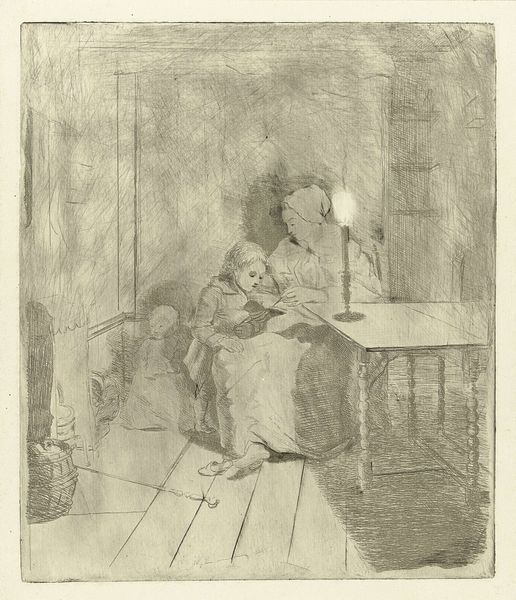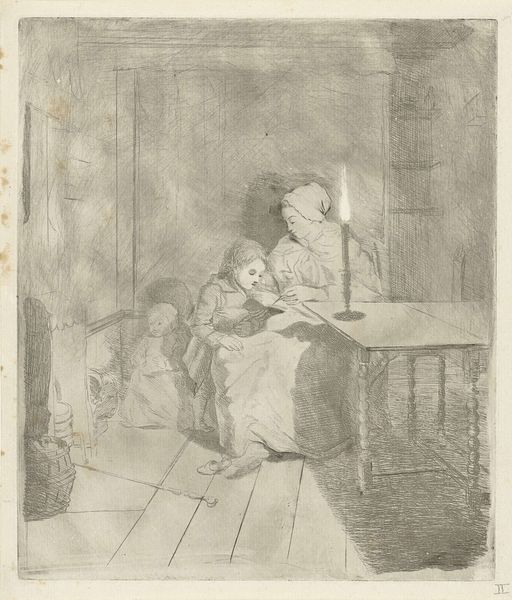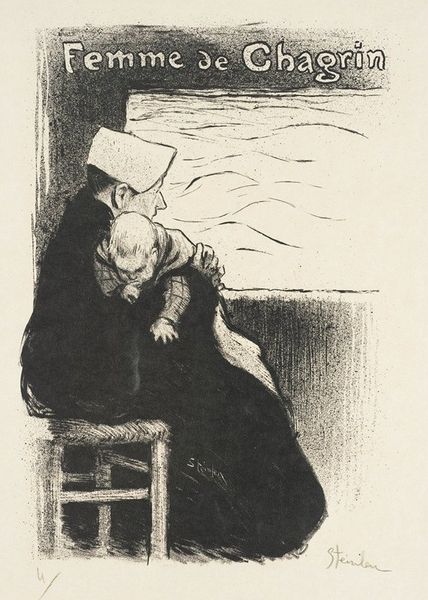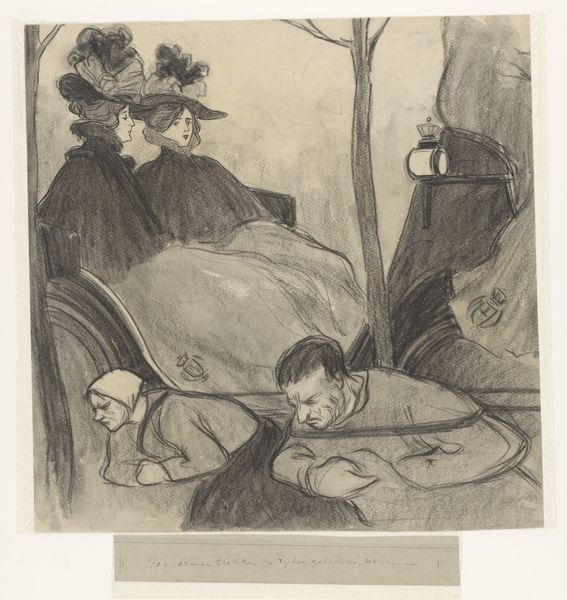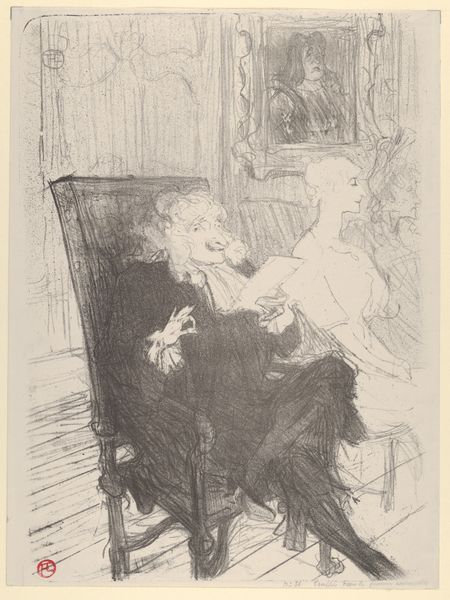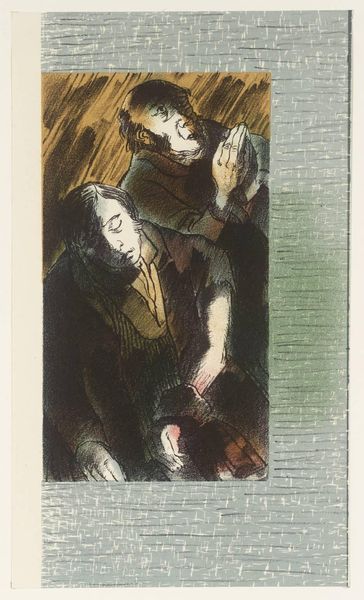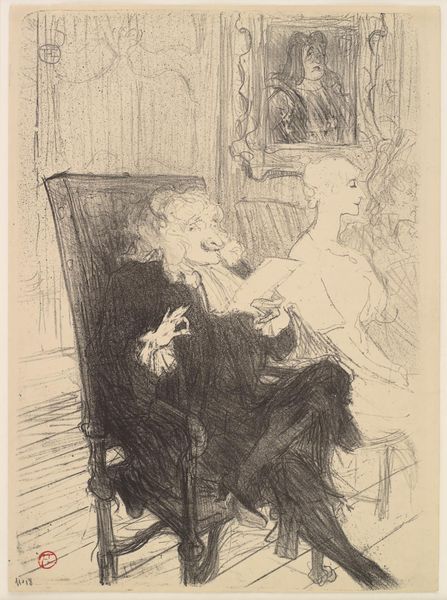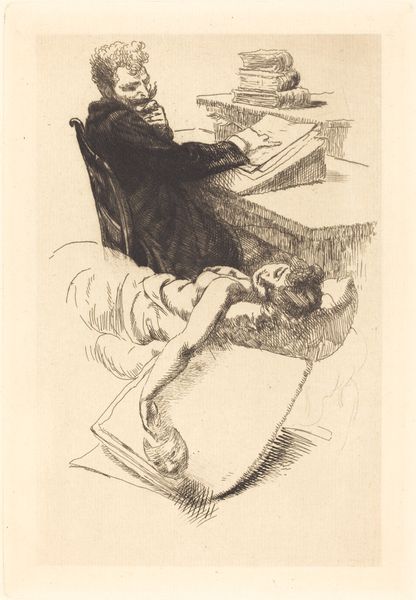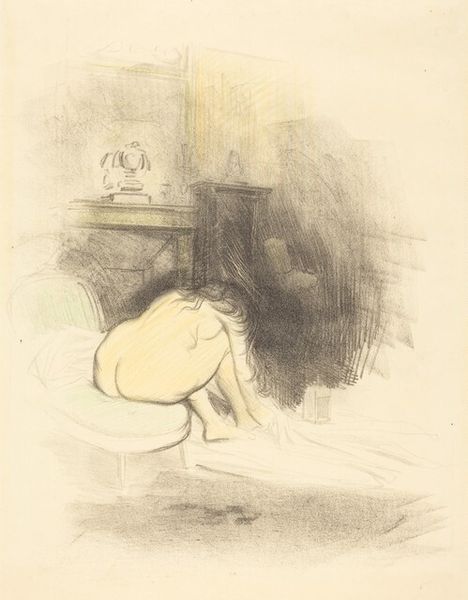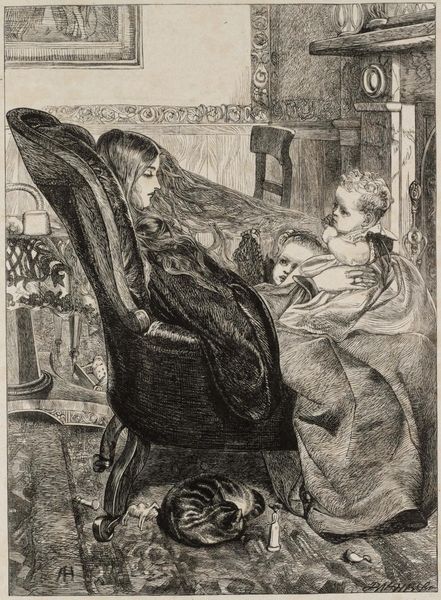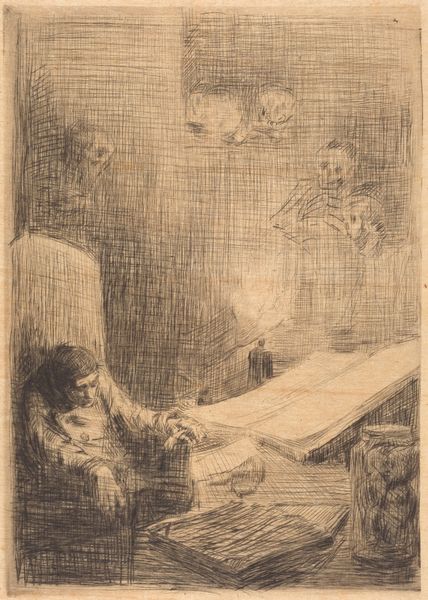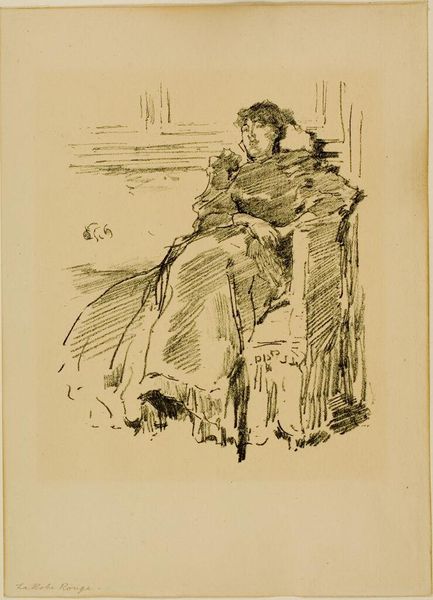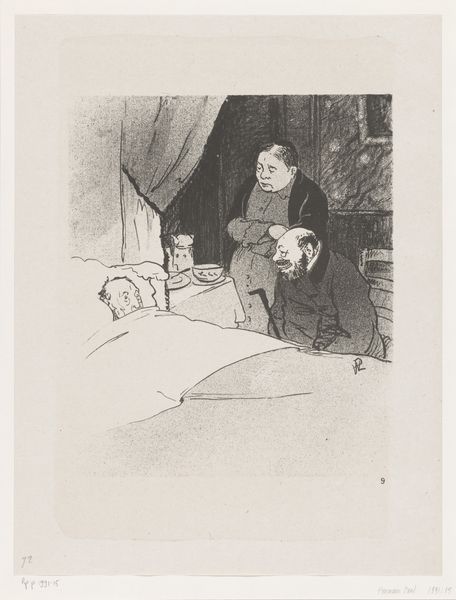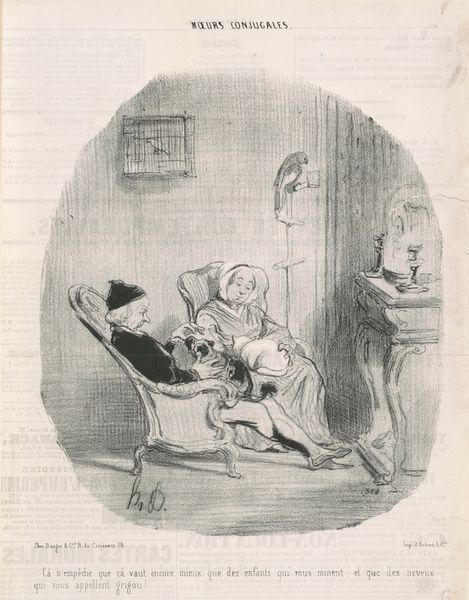
mixed-media, lithograph, print
#
portrait
#
figurative
#
mixed-media
#
art-nouveau
#
lithograph
# print
#
figuration
#
intimism
#
watercolour illustration
#
mixed media
Copyright: Public Domain: Artvee
Editor: This is Henri de Toulouse-Lautrec’s "A Princely Idyl, Clara Ward" from 1897. It's a mixed-media print that feels both intimate and a little… cynical? What do you see in this piece? Curator: It's fascinating how Lautrec captures Clara Ward. She was an American heiress who scandalized society by marrying a Prince and then running off with a Romani violinist. Consider the gaze – Ward’s cool, almost detached profile versus the peering, somewhat caricatured figure in the background. What does this juxtaposition tell us about power dynamics and societal perceptions of women at the time? Editor: So, it's a commentary on her position? I hadn't considered the way the man in the background is drawn differently. Curator: Exactly! The print invites us to think about the male gaze and its potential to objectify. It's not just about representing Clara Ward, but also about unveiling the complex social environment that surrounded her. This relates to a broader conversation around the objectification of women and the constraints placed on their agency, particularly in the late 19th century. How do you think her wealth played into the ways she was viewed? Editor: I guess it made her more of a target. More visible, maybe? Someone whose choices were open to public scrutiny because she had the "privilege" of choice. Curator: Precisely. And it invites us to reflect on the societal rules about who has the right to transgress those norms and who gets punished. The 'princely idyl' seems less like a romance, and more like a cage. Editor: That makes the cynical feeling I got make more sense. It's a really layered artwork! Curator: Indeed. By examining art like this through the lenses of gender, class, and social power, we start to understand art history as part of broader narratives of identity and politics. Editor: Thanks! I definitely have a different perspective now.
Comments
No comments
Be the first to comment and join the conversation on the ultimate creative platform.
